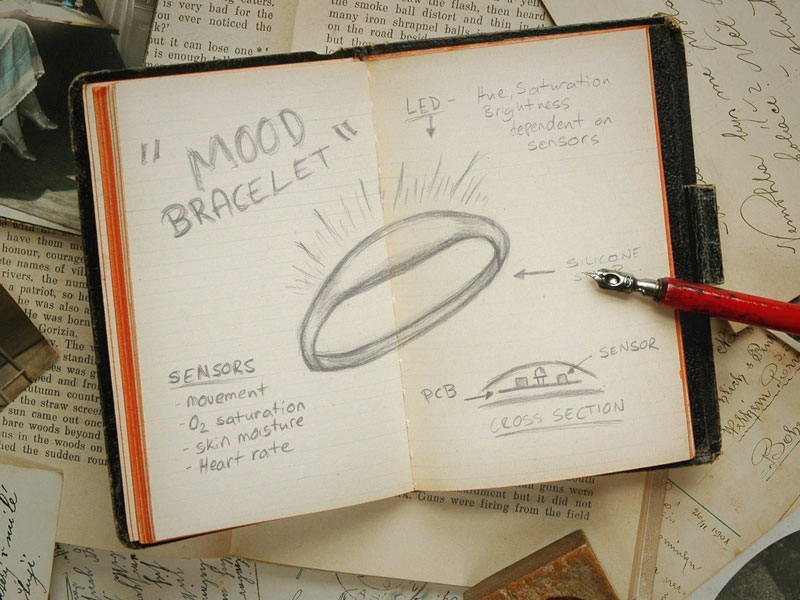
“MOOD Bracelet”
A wearable tech accessory that displays your mood. In particular the strength of the mood, based on biometric feedback. Inspiration From 2 places:
“Mood rings” - were invented in 1975 (before i was born!) and incorporated a thermochromic element, such as liquid crystal, that changes colour based upon the temperature of the finger of the wearer.
Some children (and adults) have mood regulation challenges. Using biofeedback helps people control their response, by realizing when it’s underway and employing techniques to calm their high-state of physiological arousal.
Application
Placed tightly on the wrist, it will measure one or more physical parameters and provide feedback in the form of a coloured light.
Research
Much like the original “mood ring”, this is based on pseudo-science. The device will not be able to differentiate between which moods people have, but should be able to define the strength of that mood depending on the person’s physiological response to that mood.
Strong emotions usually follow one or more of these physiological responses:
- Erratic movements
- Rise in skin temperature
- Rise in skin humidity
- Rise in heart rate
- Rise in breathing rate
Development
Minimal viable project would include a 3 axis accelerometer that would define the parameters of the RGB LED light/array (Hue, Saturation and Luminosity) based upon changes in sensor output.
Further sensors to possibly include:
- Skin moisture
- Heart rate
- O 2 concentration
- Temperature
- Haptic feedback
Additional “modes” of output behaviour. E.g. different levels of sensitivity or limit the amount of sensors being used.
Collect sensor data for visualisation and tracking by WIFI / BlueTooth to an app.
Skills used:
- Computer-aided design
- Computer-controlled cutting
- Computer-controlled machining
- Moulding and Casting
- Electronics design
- Electronics production
- 3D printing
- Input devices
- Output devices
- Networking and communications
- Embedded programming
- Interface and application programming
- Debugging
Further uses
Further uses could include this device in the training/ therapeutic use for other challenges such as fine motor skills development (e.g. spinal/brain injuries).
Also for recreation such as dancing, or (speed) dating situations.